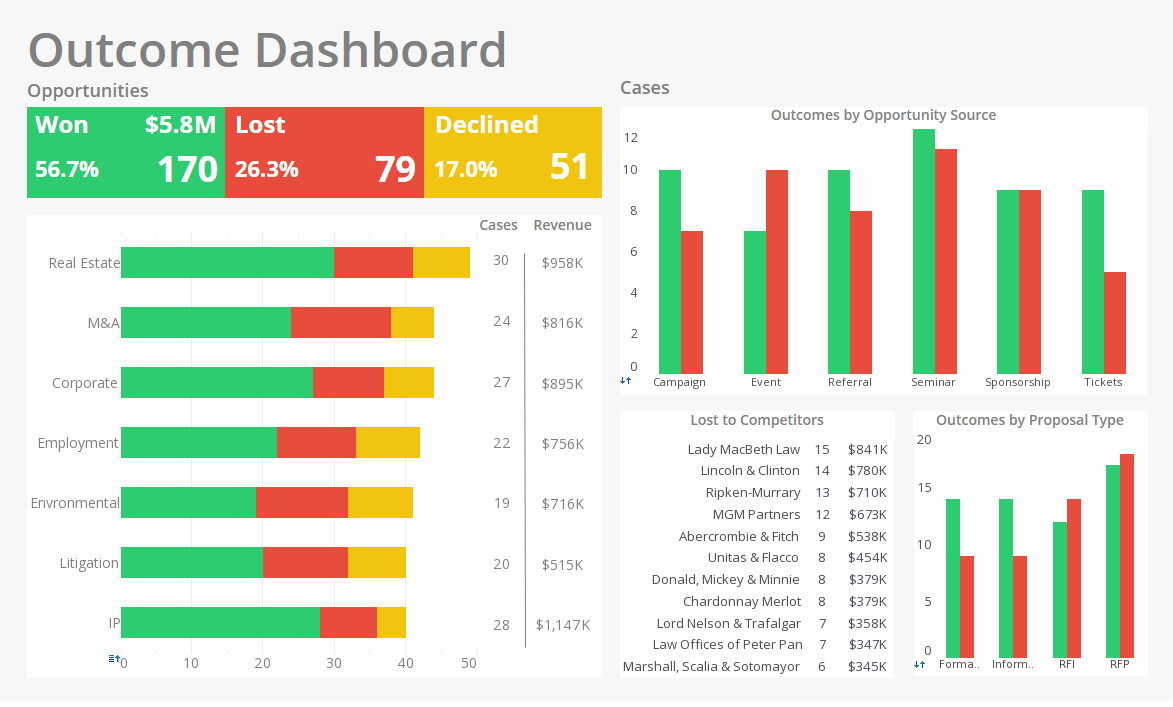Report Table Properties
InetSoft's reporting software gives you sophisticated table property tools that help you get the most from your data visualizations. View the example below to learn more about the Style Intelligence solution.
This section presents attributes of the Table element. Right-click on a Table element, and select
‘Properties’ from the context menu. The properties dialog allows you to modify color, alignment,
font, and table
style, as well controlling the table flow.
Right-click on a Table element, and select ‘Format’ from the context menu. In the ‘Format’ dialog, you can assign format options such as the type/style of entry in the cell, the alignment, the color properties, and suppression options.
You can switch between tables and crosstabs (pivot tables) depending on yourneeds. Right-click on a Table element, and select ‘To Crosstab’. Note that the ‘Data Query’ interface now permits crosstab grouping.
A crosstab or pivot table has row and column grouping, and displays a lot of information in a concise aggregated form. Right-click on a table, and select ‘To Crosstab’ to change the grouping type and expose the crosstab options. All other functions, like formatting and properties, are just like a Table element.
Right-click on a Crosstab and choose ‘Options’. Right-click on a Crosstab element, and choose ‘To Table’. Note the ‘Data Query’ interface now permits table grouping.
| #1 Ranking: Read how InetSoft was rated #1 for user adoption in G2's user survey-based index | Read More |
More Articles About Reporting
Dashboards and Reporting for the Technology Industry - Dashboards and reporting have become increasingly important components of application software and web services. InetSoft's components can provide embedded information exploration and delivery within this context. InetSoft's product is embedded into the application through a single sign-on and report embedding mechanism. InetSoft provides advanced report creation options that allow sophisticated algorithms and business logic to drive the reports. For example, a security software application could feature a network monitoring dashboard based on an alert-driven execution model. This distills actionable insights from a vast amount of data and automatically provide intrusion warnings...
Forex Trader's Dashboard - A Forex trader's dashboard typically incorporates key performance indicators (KPIs) and analytics to provide a comprehensive view of market conditions, trading performance, and risk management. Here are some common KPIs and analytics used on a Forex trader's dashboard: Account Balance and Equity: Current Balance: The total amount of funds in the trading account. Equity: The account balance plus or minus any floating profits or losses. Profit and Loss (P&L) Metrics: Net Profit/Loss: The total profit or loss from all closed trades. Daily/Weekly/Monthly P&L: Breakdown of profits or losses over specific timeframes. Trade Metrics: Number of Trades: The total number of trades executed. Winning Percentage: The percentage of trades that resulted in a profit. Average Win/Loss Size: The average size of winning and losing trades...
How To Create Parameretized Reports - While simple replets such as the one in the previous example are very useful, the replet API enables the building of much more powerful and flexible replets. An important concept is that of parameterized reports. Parameterized reports allow the replet to collect user input before or after report creation. It is up to the replet to use the parameter values to customize the final report. There are multiple entry points for parameters to be passed to a replet: replet creation time, replet initialization, user-initiated customization, replet-initiated parameter prompting, etc. We cover the first two types of parameter passing in this chapter. The last two forms of parameterization are covered in subsequent chapters. As a general mechanism for collecting user information and facilitating user interaction, the parameterization support in Style Intelligence can be used for any purpose a user chooses. While simple replets such as the one in the previous example are very useful, the replet API enables the building of much more powerful and flexible replets...
Trading Operations Analyst Dashboard - A Trading Operations Analyst plays a crucial function. These experts are in charge of controlling risks, optimizing trading methods, and assuring the seamless execution of deals. They largely depend on analytics and Key Performance Indicators (KPIs) to accomplish their aims. This article explores the vital KPIs and statistics used by a trading operations analyst to manage the complexity of the trading environment...
What Are Reasons to Schedule Report Delivery? - Scheduling report delivery can bring a range of benefits to organizations, enhancing efficiency, decision-making, and overall productivity. Here are several key reasons to schedule report delivery: 1. Timely Decision-Making Consistency: Scheduled reports ensure that decision-makers receive critical information at regular intervals, enabling them to make timely and informed decisions. Proactive Management: Regularly scheduled reports allow managers to anticipate issues and opportunities, rather than reacting to problems after they occur. 2. Operational Efficiency Automation: Automating the delivery of reports reduces the manual effort required to compile and distribute information, freeing up staff to focus on higher-value tasks. Resource Allocation: Scheduled reports help in the efficient allocation of resources by providing regular updates on resource usage and availability. 3. Improved Accuracy and Consistency Standardization: Scheduled reports often follow a standardized format, ensuring consistency in data presentation and reducing the likelihood of errors...
What Are the Reasons to Use Cascaded Parameter in a Report? - Cascaded parameters in a report offer several benefits and are commonly used in various reporting scenarios. Here are some reasons to use cascaded parameters: Improved User Experience: Cascaded parameters can enhance the user experience by allowing users to narrow down their selections dynamically. Instead of presenting users with a long list of options for each parameter, cascaded parameters enable users to make selections based on the values of preceding parameters. This simplifies the selection process and reduces cognitive load for users. Filtering and Drill-Down: Cascaded parameters facilitate filtering and drill-down capabilities in reports. Users can start with broader categories or criteria and progressively refine their selections by choosing from cascading parameter values. This enables users to focus on specific subsets of data and analyze information in greater detail...
| Previous: Managing Multiple Report Elements |


